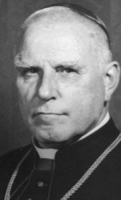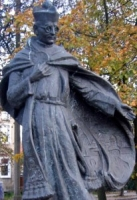Saint Catherine of Sweden
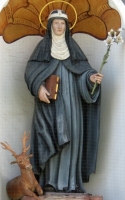
Also known as
• Catherine Vastanensis
• Catherine of Vadstena
• Katarina...
Profile
Fourth of the eight children of Saint Bridget of Sweden and Ulf Gudmarsson. Educated at the convent of Riseberg. Married by arrangement at age 13 to the pious German noble Eggart von Kürnen. Soon after their marriage, both she and her husband took vows of chastity and continence. Travelled to Rome, Italy in c.1350 to be with her mother. Widowed soon after.
For the next 25 years the two women used Rome as a base for a series of pilgrimages, including one to Jerusalem. When home, they spent their days in prayer and meditation, working with the poor, and teaching them religion. They each had to fend off the unwanted advances of local men, including young lords; during one of these, a wild hind came to Catherine's defense, chasing off the troublesome, would-be suitor.
When Bridget died, Catherine took her body back to Sweden, burying it at the convent of the Order of the Holy Savior (Brigittines) at Vadstena. Catherine became superior of the Order, and served as abbess. Wrote a devotional work entitled Sielinna Troëst (Consolation of the Soul), but no copies have survived. Attained papal approval of the Brigittine Order in 1375. Worked for the canonization of her mother.
Born
1331 in Sweden
Died
• 24 March 1381 of natural causes
• relics translated to Vadstena, Sweden in 1488
Canonized
1484 (cultus confirmed) by Pope Innocent VIII
Patronage
• against abortions
• against miscarriages
Representation
• Brigittine abbess with a hind at her side
• Brigittine holding a lily
• Brigittine dressing a poor man's wounds
• Brigittine being brought Communion on her death bed
Saint Oscar Arnulfo Romero y Galdámez
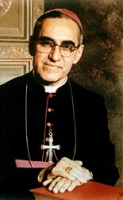
Profile
Second of seven children born to Santo Romero and Guadaleupe de Jesus Galdamez. Ordained on 4 April 1942 in Rome, Italy. Parish priest of Anamoros, La Union, El Salvador in 1943. Secretary to the diocese of San Miguel, El Salvador in 1944. Auxiliary bishop of San Salvador, El Salvador and titular bishop of Tambeae on 25 April 1970. A conservative man and cleric by nature, he was at odds with many of the area priests who were opposed the repressive El Salvadorian government, and who were aligned with leftist ideologies. Bishop of Santiago de Maria, El Salvador on 15 October 1974. Archbishop of San Salvador on 3 February 1977. By this point Romero had come to realize that the ruling class had no concern for the condition of the rest of the population, and was determined to violently repress any opposition. He was out-spoken the cause of the poor and oppressed, and always within the confines of his vocation. Martyr.
Born
15 August 1917 in Ciudad Barrios, San Miguel, El Salvador
Died
shot by a government-affiliated death squad on the morning of 24 March 1980 in the chapel of La Divina Providencia Hospital in San Salvador, El Salvador while celebrating Mass
Beatified
• 23 May 2015 by Pope Francis
• recognition celebrated at Plaza Divino Salvador del Mundo, San Salvador, El Salvador, Cardinal Angelo Amato, prefect of the Congregation for Causes of the Saints, chief celebrant
Canonized
14 October 2018 by Pope Francis at Saint Peter’s Basilica, Rome, Italy
Patronage
• Caritas Internationalis (chosen 17 May 2015)
• World Youth Day 2019
Blessed Bertha de'Alberti of Cavriglia
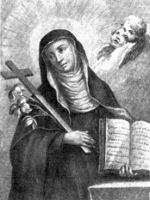
Also known as
• Bertha de Bardi
• Bertha de'Alberti
• Bertha d'Alberti
• Bertha of Cavriglia
• Berta...
Additional Memorial
1st Sunday in August (Montano and Cavriglia, Italy)
Profile
Daughter of Lothario di Ugo, Count of Vernio. Vallombrosan Benedictine nun at the Saint Felicitas convent in Florence, Italy. Worked with Blessed Qualdo Galli. Reforming abbess of the convent of Santa Maria de Cavriglia in Fiesole, Italy in 1153; she served there for her final ten years during which the house grew in numbers and reputation for spirituality. She set such an example for other Vallombrosan leaders that she is considered the founder of the female branch.
Born
c.1106 on the family estate in Florence, Tuscany, Italy
Died
• Easter Sunday, 6 April 1163 at Fiesole, Italy of natural causes
• relics translated to the high altar of the church in Cavriglia, Italy in 1731
Patronage
• Montano, Italy
• Cavriglia, Italy
Blessed John del Bastone
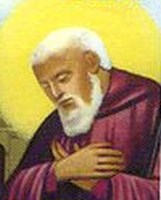
Also known as
• Giovanni Bonello Botegoni
• John Bottegoni
• John of the Staff
• John of the Club
Profile
Born to a wealthy farm family, the youngest of five children of Bonello and Superla Botegoni. He was sent to study in Bologna, Italy. There he developed a sore on his leg that became so badly infected that he walked with a staff the rest of his life, leading to the name by which he is best known. Benedictine monk c.1230; he lived in a small cell and wore the cowl for 60 years. Spiritual student of Saint Silvester Gozzolini at Monte Fano, Italy. Ordained late in life, he was a sought after spiritual teacher, especially to his brother monks.
Born
c.1200 in Paterno, Italy
Died
• 24 March 1290 at the hermitage of Monte Fano, Italy of natural causes
• interred in the church of Saint Benedict in Fabriano, Italy
• the only church known dedicated to him is in Talangama, Sri Lanka
Beatified
29 August 1772 by Pope Clement XIV (cultus confirmed)
Blessed Anna Ellmerer
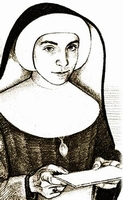
Also known as
Sister Maria Felicitas
Profile
A member of the Sisters of Saint Elizabeth, joining in 1911 and making her perpetual profession on 5 July 1923. She served as a teacher in Düsseldorf, Germany, and the Polish cities of Wroclaw, Kup, and Nysa. Near the end of World War II, Soviet Red Army soldiers attacked the sisters in their house in Nysa. When one of them tried to drag Blessed Anna outside, she fought back and defied him, trying to get to the injured sister superior. In response, the soldier shot her. Martyr.
Born
12 May 1889 in Grafing bei München, Ebersberg, Germany
Died
• shot on 24 March 1945 in Nysa (Neisse Oberneuland), Poland
• her killer then kicked her body for a while
• she was buried in the sisters' collective grave in the monastery garden in Nysa
Venerated
19 June 2021 by Pope Francis (decree of martyrdom)
Blessed Diégo Josef of Cádiz

Also known as
• Apostle of Our Lady, the Mother of the Good Shepherd
• Apostle of the Blessed Trinity
• Didacus of Cádiz
• Francisco José López-Caamaño García-Pérez
Profile
Joined the Capuchin Order in Seville, Spain in 1759. Missionary throughout Spain, primarily in Andalusia. Spent most of his pastoral time in the confessional. Member of the Confraternity of the Most Holy Trinity.
Born
30 March 1747 in Cádiz, Seville, Spain as Francisco José López-Caamaño García-Pérez
Died
<• 24 March 1801 in Ronda, Malaga, Spain of natural causes
• interred in the sanctuary of Our Lady of Peace church in Ronda, Spain
Beatified
22 April 1894 by Pope Leo XIII
Saint Aldemar the Wise
Also known as
• Aldemar of Capua
• Aldemar of Bucchhianico
• Aldemaro, Aldemario
Profile
Monk at Monte Cassino Abbey. Spiritual director of a convent at Capua, Italy, a house founded by princess Aloara. Known as a miracle worker. A dispute developed between the princess and Aldemar's abbot; she wanted him to stay, the abbot wanted him back at Monte Cassino. To escape the dispute, Aldemar moved to Boiana, Italy but fled after some one involved in the argument tried to kill him. He founded a monastery at Bocchignano, Italy which became the motherhouse for several area monasteries.
Born
985 in Capua, Italy
Died
• c.1080 in Bucchianico, Italy of natural causes
• buried in the church of Saint Urban in Bucchianico, Italy
• tomb desecrated and his relics scattered in 1799 by invading French troops
• relics later recovered and placed in the altar dedicated to him in the church Saint Urban in Bucchianico
Blessed Luczja Heymann
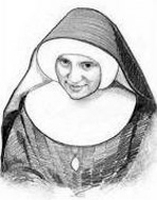
Also known as
• Sister Maria Sapientia
• Lucia Emmanuela
Profile
A member of the Sisters of Saint Elizabeth, joining in 1894 and making her perpetual profession on 2 July 1906. She served as a nurse in Hamburg-Eppendorf, Germany and Nysa, Poland. Near the end of World War II, the Soviet Red Army entered the city pf Nysa and went to the house of the Sisters. The soldiers grabbed some of the sisters with the intention to rape them. Blessed Luczja stood up to the men and tried to help her sisters, and was shot for her effort. Martyr.
Born
19 April 1875 in Lubiesz, Tuczno, Walcz, Poland
Died
• shot 24 March 1945 in at the monstery of the Sisters of Saint Elizabeth in Nysa (Neisse Oberneuland), Poland
• buried in the garden of the Sisters' house
Venerated
19 June 2021 by Pope Francis (decree of martyrdom)
Saint Caimin of Lough Derg
Also known as
• Camin of Inniskeltra
• Caminus of Lough Derg
• Cammin of Inniskeltra
Profile
Son of Dima and Cuman; related to the kings of Leinster, Ireland and half-brother of Guare, king of Connaught, Ireland. Little is known of his early life, but he was well educated. Hermit at Inniskeltra (Inish-Keltra), Lough Derg where his reputation for holiness attracted students. With Saint Senan of North Wales, he founded a monastery and a chapel, known as Tempul-Cammin, on the island of the Seven Churches; it was raided by the Danes several times, was occupied over 350 years, and some of its ruins survive today. Wrote a commentary on the Psalms, and a piece of it in his own hand-writing has survived. Reported miracle worker.
Born
Irish
Died
653 of natural causes
Saint Hildelith of Barking
Also known as
Hildelid, Hildelida, Hildelitha, Hildeltha, Hildilid, Hildelitba
Additional Memorials
• 7 March (translation of relics)
• 23 September (translation of relics)
Profile
Anglo-Saxon princess; she was well educated, very cultured, and could read Latin. Spent most of her youth in France. Nun at Chelles and Faremoutiers-en-Brie, France. Recalled to England by Saint Erconwald to train his sister, Saint Ethelburga of Barking. Friend of Saint Cuthburgh of Wimborne. When Ethelburga became abbess of Barking Abbey, Hildelith stayed as a nun, and eventually served as abbess there herself. Much admired by Saint Aldhelm of Sherborne, Saint Bede the Venerable and Saint Boniface. Visionary.
Born
in England
Died
c.712 of natural causes
Blessed Maria Serafina of the Sacred Heart
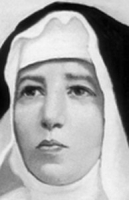
Also known as
• Clotilde Micheli
• Maria Serafina del Sacro Cuore di Gesu Micheli
• Seraphina Micheli
Profile
Founder the Institute of the Sisters of the Angels on 28 June 1891 devoted to adoration of the Holy Trinity, similar to the life of the angels. There were 15 houses founded during her lifetime, and today they work in Italy, Brazil, Indonesia, Benin and the Philippines.
Born
11 September 1849 in Imér, Trent, Italy
Died
24 March 1911 in Faicchio, Benevento, Italy
Beatified
28 May 2011 by Pope Benedict XVI
Blessed Bertrada of Laon

Also known as
• Bertrada the Pius
• Bertrada la Pia
• Bertha, Berta
Profile
Married to King Pepin the Short. Queen of the Franks. Mother of Blessed Charlemagne. Her life was overshadowed by her illustrious husband and her son, and most details about her have been lost.
Born
726
Died
• 12 July 783 of natural causes
• buried in Saint-Denis, France
Patronage
spinners
Saint Macartan of Clogher
Also known as
• Aedh mac Carthin
• Macartin, MacCartain, MacCarthen, MacCarthius
Profile
Friend and disciple of Saint Patrick. Uncle of Saint Brigid. Missionary with Patrick through pagan Ireland. Consecrated as the first bishop of Clogher, Ireland by Patrick in 454. Converted the father of Saint Tigernach of Clogher. Miracle worker.
Born
5th century Ireland
Died
c.505 of natural causes
Patronage
Clogher, Ireland, diocese of
Saint Latinus of Brescia
Also known as
Flavius Latinus
Profile
Spiritual student of Saint Viator of Bergamo. Third bishop of Brescia, Italy c.84 where he served for 30 years. Imprisoned, tortured and executed for his faith in the persecutions of Trajan. Martyr.
Died
• 115
• relics re-discovered in the 15th century
• relics enshrined in the church of Saint Afra
Blessed Brian O'Carolan
Additional Memorial
20 June as one of the Irish Martyrs
Profile
Priest in the diocese of Meath, Ireland. Martyr.
Born
Irish
Died
martyred on 24 March 1606 near Trim, Meath, Ireland
Beatified
27 September 1992 by Pope John Paul II in Rome, Italy
Saint Cairlon of Cashel
Also known as
Caorlan
Profile
Abbot. He died and was raised to life through the prayers of Saint Dageus. Archbishop of Cashel, Ireland.
Born
Irish
Died
6th century of natural causes
Saint Pigmenius of Rome
Also known as
Pigmentius, Pigmène, Pimenius
Profile
Priest in Rome, Italy. Tutor to the young Julian the Apostate. Martyed by order of Julian.
Died
drowned in the Tiber River in 362
Saint Domangard of Maghera
Also known as
Donard
Profile
Hermit on the mountain now Slieve-Donard, Ireland after his memory.
Died
c.500
Patronage
Maghera, County Down, Ireland
Saint Secundus of North Africa
Also known as
Secondino, Secundulus
Profile
Brother of Saint Romulus. Martyr.
Died
Mauritania
Saint Epigmenius of Rome
Also known as
Epigmène
Profile
Priest in Rome, Italy. Martyred in the persecutions of Diocletian.
Died
c.300 in Rome, Italy
Saint Timothy of Rome
Profile
Martyr. Mentioned by Pope Pius I in a letter to the bishop of Vienne, Gaul.
Died
c.148 in Rome, Italy
Saint Agapitus of Synnada
Profile
Third century bishop of Synnada, Phrygia.
Representation
man standing between a mitre and a suit of armor
Saint Mark of Rome
Profile
Martyr. Mentioned by Pope Pius I in a letter to the bishop of Vienne, Gaul.
Died
c.148 in Rome, Italy
Saint Bernulf of Mondovì
Also known as
• Bernulf of Asti
• Bernolfo of...
Profile
Bishop of Mondovi, Italy.
Saint Romulus of North Africa
Profile
Brother of Saint Secundus. Martyr.
Died
northern Africa
Saint Epicharis of Rome
Profile
Priest in Rome, Italy. Martyr.
Died
300
Saint Seleucus of Syria
Profile
Martyr.
Born
Syrian
Saint Severo of Catania
Profile
Bishop of Catania, Italy.
Martyrs of Africa
Profile
A group of Christians murdered for their faith in Africa, date unknown. The only details about their that survive are the names - Aprilis, Autus, Catula, Coliondola, Joseph, Rogatus, Salitor, Saturninus and Victorinus.
Martyrs of Caesarea
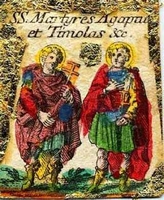
Profile
A group of Christians martyred together in the persecutions of Diocletian. We know little else but six of their names - Agapius, Alexander, Dionysius, Pausis, Romulus and Timolaus.
Died
beheaded in 303 at Caesarea, Palestine













